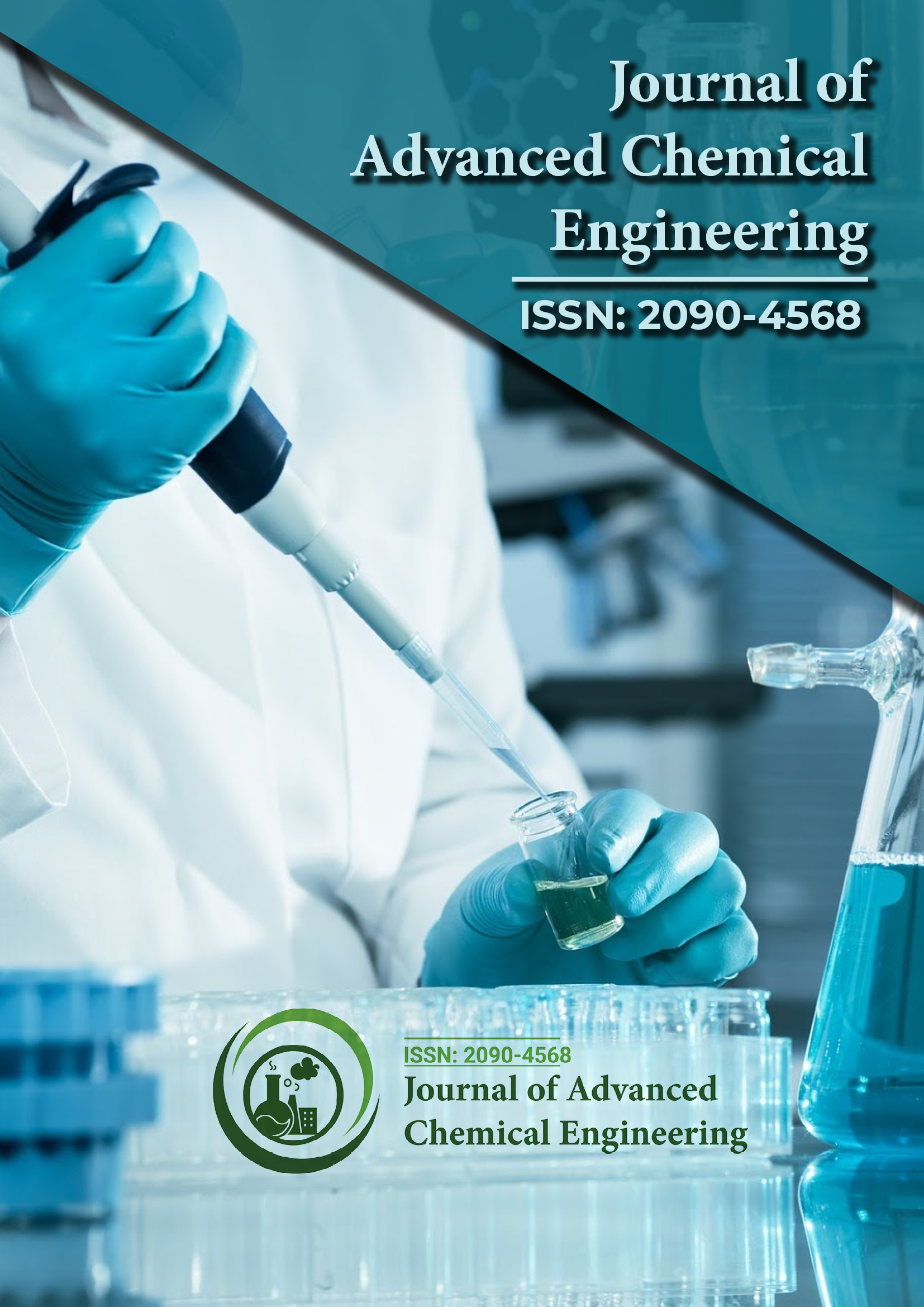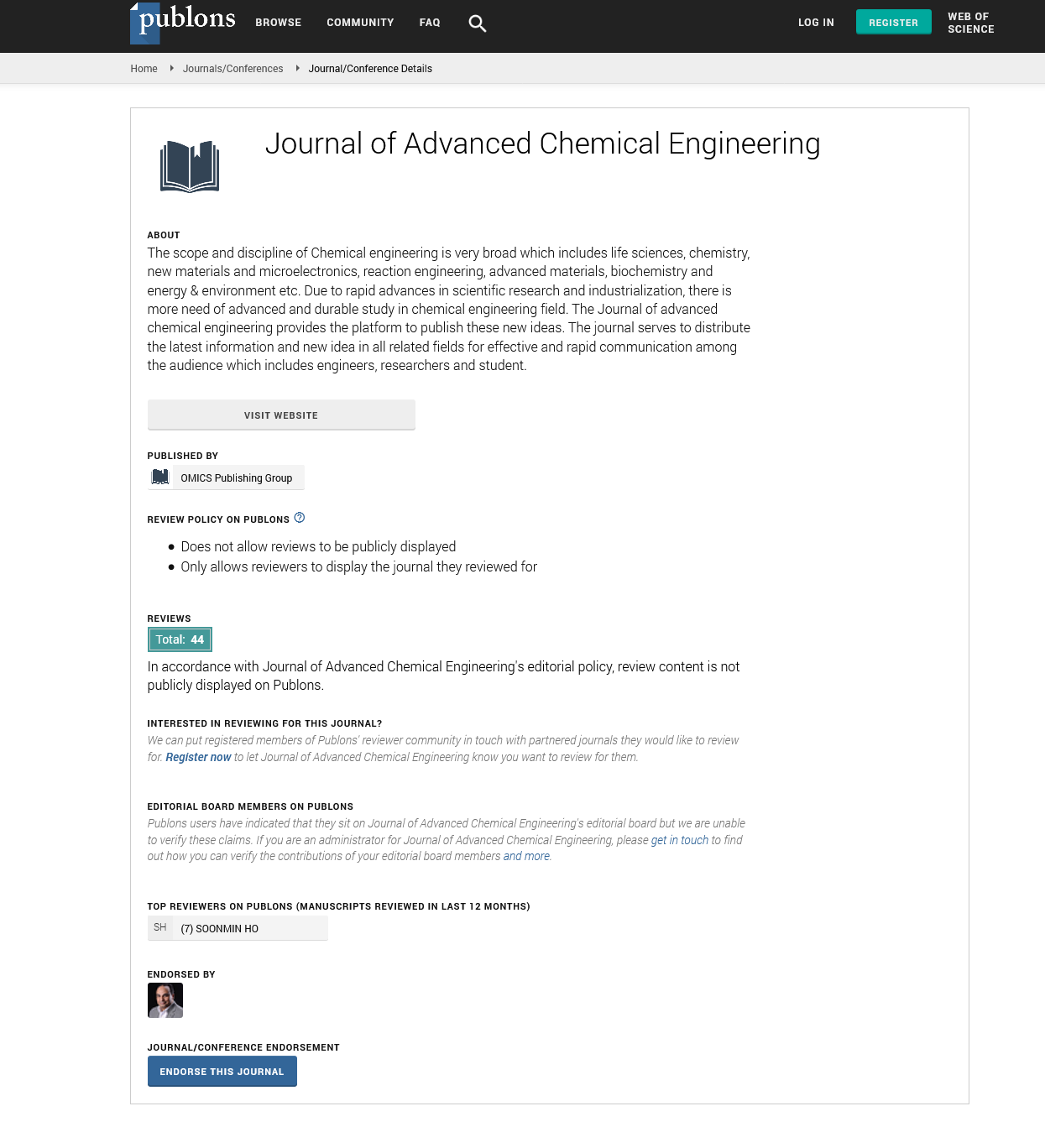Indexed In
- Open J Gate
- Genamics JournalSeek
- Smithers Rapra
- RefSeek
- Directory of Research Journal Indexing (DRJI)
- Hamdard University
- EBSCO A-Z
- OCLC- WorldCat
- Scholarsteer
- Publons
- Geneva Foundation for Medical Education and Research
- Google Scholar
Useful Links
Share This Page
Journal Flyer

Open Access Journals
- Agri and Aquaculture
- Biochemistry
- Bioinformatics & Systems Biology
- Business & Management
- Chemistry
- Clinical Sciences
- Engineering
- Food & Nutrition
- General Science
- Genetics & Molecular Biology
- Immunology & Microbiology
- Medical Sciences
- Neuroscience & Psychology
- Nursing & Health Care
- Pharmaceutical Sciences
Commentary - (2024) Volume 14, Issue 2
Managing Complex Risks and Safety Measures in Chemical Process Industries
Irene Ruberti*Received: 20-May-2024, Manuscript No. ACE-24-26617 ; Editor assigned: 22-May-2024, Pre QC No. ACE-24-26617 (PQ); Reviewed: 05-Jun-2024, QC No. ACE-24-26617 ; Revised: 12-Jun-2024, Manuscript No. ACE-24-26617 (R); Published: 19-Jun-2024, DOI: 10.35248/2090-4568.24.14.333
Description
The chemical process industry is integral to modern life, producing essential materials ranging from pharmaceuticals to agricultural chemicals. However, the complexity of chemical processes introduces numerous safety and security risks. Addressing these risks is vital for protecting personnel, the environment, and the integrity of operations.
Understanding safety risks
Safety in chemical processing involves managing risks associated with handling hazardous substances and operating complex machinery.
Chemical exposure: Workers in chemical plants are exposed to various hazardous substances, including toxic, flammable, and corrosive chemicals. Prolonged or accidental exposure can lead to severe health issues such as respiratory problems, skin burns, or long-term diseases like cancer. Proper handling procedures, Personal Protective Equipment (PPE), and regular health monitoring are essential to mitigate these risks.
Process safety incidents: Chemical plants often operate under high pressure and temperature conditions, which can lead to process safety incidents if not properly controlled. Implementing rigorous Process Safety Management (PSM) systems helps in identifying potential hazards and maintaining safe operational conditions.
Equipment failures: Equipment failure is another significant safety risk. Malfunctions in reactors, pumps, or other critical machinery can lead to process disruptions or hazardous conditions. Regular maintenance, equipment inspections, and adherence to operational protocols are vital for minimizing these risks.
Human error: Human error remains a leading cause of safety incidents in chemical plants. Mistakes in operating procedures, misjudgment, or inadequate training can result in dangerous situations. Comprehensive training programs, clear procedural documentation, and robust safety culture practices are necessary to address this risk.
Addressing security risks
Security concerns in chemical process industries involve protecting against intentional threats that could lead to significant harm.
Insider threats: Employees with malicious intent or those who are compromised can pose security threats. Insider threats can result in destruction, theft of sensitive information, or other malicious activities. Implementing thorough background checks, surveillance, and access control measures can help mitigate these risks.
Cybersecurity threats: With the increasing digitalization of chemical processes, cybersecurity threats have become more pronounced. Cyberattacks can disrupt operations, steal sensitive data, or cause safety incidents.
Physical security: Chemical plants must safeguard against unauthorized access, vandalism, and theft.
Regulatory and compliance measures
Compliance with regulations and standards is a fundamental aspect of managing safety and security risks in chemical processing. Regulatory bodies such as the Occupational Safety and Health Administration (OSHA) and the Environmental Protection Agency (EPA) set guidelines for safe operations and environmental protection.
Safety standards: Adhering to safety standards such as the Process Safety Management (PSM) standard, established by OSHA, helps in identifying and mitigating risks associated with hazardous chemicals. Compliance with these standards involves conducting regular safety audits, hazard analyses, and emergency response drills.
Security regulations: Regulations like the Chemical Facility Anti-Terrorism Standards (CFATS) provide guidelines for securing chemical facilities against terrorist threats. Facilities must assess their security risks, implement appropriate security measures, and report compliance to relevant authorities.
Implementing best practices
To effectively manage safety and security risks, chemical process industries should adopt best practices.
Risk assessments: Regular risk assessments help in identifying potential hazards and vulnerabilities. By evaluating the likelihood and impact of various risks, plants can prioritize their risk management efforts and implement appropriate control measures.
Safety culture: Using a strong safety culture is essential for minimizing risks. This involves encouraging open communication about safety concerns, promoting adherence to safety protocols, and recognizing employees who contribute to maintaining a safe work environment.
Training and education: Ongoing training and education for employees are vital for ensuring that they are aware of safety procedures, emergency response protocols, and security practices. Regular drills and refresher courses help reinforce these practices and keep staff prepared for potential incidents.
Emergency preparedness: Developing and maintaining comprehensive emergency preparedness plans is essential for responding to safety and security incidents. These plans should include clear procedures for evacuation, communication, and coordination with emergency services.
Citation: Ruberti I (2024) Managing Complex Risks and Safety Measures in Chemical Process Industries. Adv Chem Eng. 14.333.
Copyright: © 2024 Ruberti I. This is an open-access article distributed under the terms of the Creative Commons Attribution License, which permits unrestricted use, distribution, and reproduction in any medium, provided the original author and source are credited.

